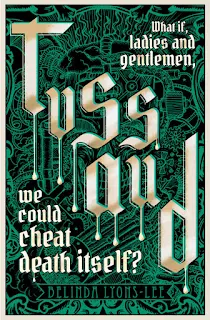Other than being French, I didn't know anything about the life of Madame Tussaud prior to reading this book other than the legacy of her wax museums. Australian author Belinda Lyons-Lee has changed all of that with the release of her historical fiction debut novel Tussaud.
Marie Tussaud barely managed to escape the French Revolution with her life, during which thousands were incarcerated and executed. Marie herself was accused of being a royal sympathiser, arrested and her head was shaved in preparation for execution by guillotine. Marie's release came as a shock, although it also came at a cost. In exchange for her life, Marie was forced to make death masks and wax recreations of the heads belonging to those famously executed, including Marie Antoinette.
This work would stay with Marie for life and Lyons-Lee does an amazing job of drawing from known facts to imagine her life from that point forward. Marie teams up with a famous magician by the name of Philidor and together they create a show called the Phantasmagoria. It's this show that attracts the attention of the eccentric 5th Duke of Portland, William Cavendish who will go on to make an interesting business proposal.
Tussaud is a gothic story that takes place first in Paris before shifting to London and the rambling and isolated estate of Welbeck Abbey. Peopled with characters yearning to fill a void and each with their own agenda, Tussaud is full of secrets, deception, greed, desire and exploitation with plenty of characters keen to take advantage of Marie and her creations for their own purposes. Tussaud also has a sense of 'other' that reminded me a little of the subtle supernatural elements running through The Silent Companions by Laura Purcell. If you loved that, I think you'll also love this.
The writing effectively evoked the time period and here's an example of a scene featuring Philidor in early 1800s London:
Tussaud has opened my eyes to the amazing and troubling life of this household name and while the life portrayed was fictional, it was certainly entertaining. Highly recommended.
The writing effectively evoked the time period and here's an example of a scene featuring Philidor in early 1800s London:
"He stood in the middle of the alleyway and lit a cigar, content to let the unseen eyes watch him further, his exposed back like a challenge. But he knew the wretches who haunted these spots were not pickpockets or murderers: they were living skeletons who crawled into the gloom of doorways and corners to curl up and waste away in soft grey clouds of rags and sighs." Page 217Presented in a stunning green cover design, I enjoyed an interview recently in which the author shared her fascination with the toxic green wallpaper of the era and how she wanted the book cover to capture the deadly association. This is one of my favourite facts from history (covered several times here on Carpe Librum) so I was overjoyed to learn she was fascinated by it too.
Tussaud has opened my eyes to the amazing and troubling life of this household name and while the life portrayed was fictional, it was certainly entertaining. Highly recommended.




































What a fabulous story. I have never given any thought to how Tussoud got her start in life.
ReplyDeleteThanks Laura, I hadn't either! I guess I just imagined she was a talented artist and I certainly didn't know she'd such a traumatic and disturbing past. It's a fascinating story, isn't it?
DeleteWow, what a life she had! I have visited The Madam Tussard Wax Museum in NYC so many times, but never knew her story. Nice review!
ReplyDeleteThanks so much and I bet the museum in NYC was amazing.
Delete